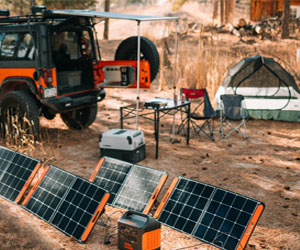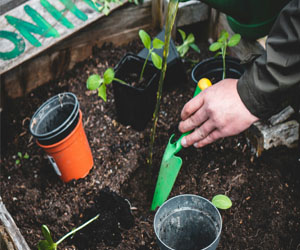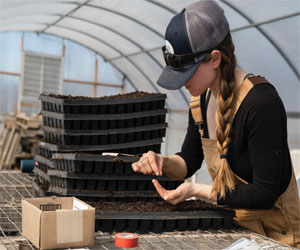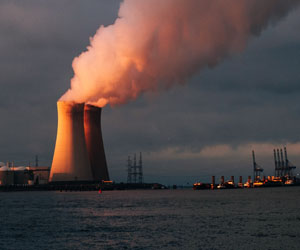


A Call To Action For A Sustainable Future

Environmental concerns have taken center stage as humanity grapples with the pressing challenges of climate change, resource depletion, pollution, and loss of biodiversity. These issues are not isolated; they are interconnected, requiring urgent attention and concerted efforts from individuals, communities, businesses, and governments worldwide. In this article, we will explore some of the most critical environmental concerns and why they demand our immediate and sustained action.
1. Climate Change: One of the most imminent environmental concerns is climate change, driven primarily by the increase in greenhouse gas emissions, such as carbon dioxide. This results in rising global temperatures, extreme weather events, and disruptions to ecosystems and human societies. Climate change is a global crisis that calls for rapid reductions in emissions and widespread adoption of clean energy sources like solar and wind power.
2. Deforestation: The rampant destruction of forests for agriculture, logging, and urban development poses a grave threat to the environment. Forests play a crucial role in carbon sequestration, biodiversity preservation, and climate regulation. Protecting and restoring these ecosystems is essential for our planet's health.
3. Pollution: Environmental pollution, including air, water, and soil pollution, is a significant concern. It adversely impacts human health, disrupts ecosystems, and damages wildlife. Initiatives to reduce pollution, stricter regulations, and sustainable practices are essential to mitigate these effects.
4. Biodiversity Loss: The loss of biodiversity due to habitat destruction, pollution, and invasive species is a significant concern. Biodiversity is essential for ecosystem stability, resilience, and human well-being. Conservation efforts and sustainable land management are crucial for addressing this issue.
5. Resource Depletion: The excessive consumption of natural resources, such as freshwater, minerals, and fossil fuels, is depleting the Earth's finite reserves. Transitioning to a more circular economy, where resources are recycled and reused, is a solution to this pressing problem.
6. Plastic Pollution: The proliferation of single-use plastics has led to a global crisis of plastic pollution in our oceans and ecosystems. Reducing plastic waste, improving recycling, and finding alternatives to plastics are necessary steps to tackle this issue.
7. Overpopulation: The Earth's population continues to grow, increasing the demands on natural resources and contributing to environmental degradation. Responsible family planning, sustainable agriculture, and responsible consumption are part of the solution.
8. Water Scarcity: Access to clean and safe drinking water is a fundamental human right. However, water scarcity is becoming increasingly prevalent due to overuse and pollution. Water conservation and responsible water management are vital to ensure a sustainable water supply.
9. Urbanization: Rapid urbanization and population growth in cities can strain resources and lead to increased pollution. Sustainable urban planning, energy-efficient buildings, and public transportation are key solutions to this concern.
10. Ocean Acidification: The oceans absorb a significant portion of the world's carbon emissions, leading to ocean acidification. This process harms marine life, including coral reefs and shellfish. Reducing carbon emissions and protecting marine ecosystems are critical.
Addressing these environmental concerns requires a global commitment to sustainability. Governments, businesses, and individuals must work together to implement policies and practices that protect the environment and promote sustainable living. From adopting clean energy to reducing waste, each action contributes to a more sustainable and healthier planet. As stewards of the Earth, it is our responsibility to act now to secure a better future for generations to come.
Maximizing Comfort In Minimal Space
 2. Multifunctional Furniture
2. Multifunctional Furniture
Tiny living demands furniture that pulls double duty. Invest in pieces that serve multiple functions, such as a sofa that can convert into a bed, a coffee table with storage, or a dining table that can fold away when not in use. These furniture items are crucial for maximizing space and utility.
3. Vertical Storage
Utilizing vertical space is key to organized tiny living. Install wall-mounted shelves, hooks, and pegs to keep items off the floor and create a sense of height. Vertical storage helps you keep your tiny home clutter-free while adding a touch of design flair.
4. Custom Storage Solutions
Tiny homes often require custom storage solutions. Consider hiring a professional or using DIY skills to create storage systems that fit your unique space. Custom cabinets, built-in shelving, and under-stair storage can make the most of every nook and cranny.
5. Clear Containers And Labels
Clear storage containers are your best friends in a tiny home. They allow you to see what's inside without having to open each container, making it easy to find what you need. Use labels to further organize your belongings, making your tiny space efficient and user-friendly.
6. Downsizing Your Wardrobe
In a tiny home, you'll need to downsize your wardrobe. Consider a capsule wardrobe with versatile, mix-and-match pieces. Rotate your clothing with the seasons to save space and keep your closet uncluttered.
7. Kitchen Efficiency
Tiny home kitchens require special attention. Invest in compact appliances, use wall-mounted storage for pots and pans, and opt for space-saving utensils and cookware. Staying organized in the kitchen is essential for making the most of your limited space.






A Cleaner Home And Healthier Planet
 1. Switch To Eco-Friendly Cleaning Products
1. Switch To Eco-Friendly Cleaning Products
One of the simplest and most effective ways to embrace green cleaning is to replace traditional cleaning products with eco-friendly alternatives. Look for cleaning products that have been certified as environmentally safe, such as those bearing the "EcoLogo" or "Green Seal" labels. These certifications ensure that the products meet stringent environmental and health standards.
2. Create Your Homemade Cleaning Solutions
Another excellent recommendation is to make your own green cleaning solutions using readily available household ingredients. Common items like white vinegar, baking soda, lemon juice, and essential oils can effectively clean a wide range of surfaces and provide a fresh, natural scent. You can mix these ingredients to create all-purpose cleaners, window cleaners, and even disinfectants.
3. Prioritize Reusable Cleaning Tools
Invest in high-quality, reusable cleaning tools such as microfiber cloths, mop heads, scrub brushes, and dusters. These tools are not only efficient at capturing dirt and dust, but they also eliminate the need for disposable cleaning supplies. By opting for reusable tools, you can significantly reduce waste and contribute to a cleaner planet.
4. Embrace Energy-Efficient Cleaning Appliances
When it's time to replace your cleaning appliances, consider investing in energy-efficient models. Energy-efficient vacuum cleaners, steam cleaners, and other cleaning appliances not only save you money on energy bills but also reduce your overall energy consumption, which is better for the environment.
5. Practice Water Conservation
Water is a precious resource, and green cleaning recommendations also include water conservation. When cleaning, be mindful of the amount of water you use. Opt for water-saving practices such as using a bucket for mopping rather than letting the water run continuously. Waterless cleaning technologies, like dry steam cleaning, are also excellent options that minimize water usage.
The Art Of Seed Selection
 Open-Pollinated vs. Hybrid Seeds
Open-Pollinated vs. Hybrid Seeds
One of the primary choices you'll encounter is between open-pollinated and hybrid seeds. Open-pollinated seeds are the result of natural pollination and breeding. They tend to be more stable and reproduce true to type, meaning that the offspring will resemble the parent plant.
On the other hand, hybrid seeds are the result of controlled cross-breeding between two different parent plants. They often exhibit desirable traits like disease resistance or improved yield. However, saving seeds from hybrid plants may not produce consistent results in the next generation.
Choosing Varieties
When selecting seeds, you'll have numerous varieties to choose from. Consider factors like:
Climate Suitability: Choose varieties that are well-suited to your local climate and growing conditions.
Growth Habit: Some plants have determinate growth (bushy and compact) while others have indeterminate growth (vining). Select according to your space and support availability.
Days To Maturity: Different varieties have varying maturity periods. Some mature quickly, while others take longer. Plan your garden timeline accordingly.
Disease Resistance: Look for varieties that are resistant to common pests and diseases in your area to reduce the need for chemical interventions.
Flavor And Appearance: Consider the taste and appearance of vegetables and fruits. After all, the end product should meet your culinary and aesthetic preferences.
Quality Matters
It's essential to purchase seeds from reputable sources. Well-established seed companies offer seeds that are more likely to be true to type, have high germination rates, and have been stored properly. When shopping for seeds, pay attention to the seed packets for information on planting depth, spacing, and care instructions.
 Year-Round Crop Production
Year-Round Crop Production
One of the most notable advantages of greenhouse farming is the ability to grow crops throughout the year, regardless of the external climate. Greenhouses provide a stable and controlled environment where temperature, humidity, and light levels can be regulated to meet the specific needs of different crops. This means that farmers are not restricted to the traditional growing seasons, leading to increased crop diversity and a more reliable food supply.
Optimal Environmental Control
Greenhouses offer precise control over environmental factors. With advanced climate control systems, farmers can adjust temperature, humidity, and CO2 levels to create ideal conditions for plant growth. This level of control minimizes the impact of extreme weather events, pests, and diseases, resulting in higher crop yields and quality. It also allows for the cultivation of crops that might not thrive in local climates.
Resource Efficiency And Sustainability
Greenhouse farming is inherently resource-efficient. By retaining heat and moisture, greenhouses reduce water usage and protect against soil erosion.
Understanding And Mitigating Our Footprint
 2. Habitat Destruction: Human activities, including urbanization, agriculture, and industrial development, have led to the destruction of natural habitats. This results in the loss of biodiversity, as many plant and animal species face extinction due to habitat loss and fragmentation. Preserving natural habitats is essential to maintaining the Earth's rich biodiversity.
2. Habitat Destruction: Human activities, including urbanization, agriculture, and industrial development, have led to the destruction of natural habitats. This results in the loss of biodiversity, as many plant and animal species face extinction due to habitat loss and fragmentation. Preserving natural habitats is essential to maintaining the Earth's rich biodiversity.
3. Pollution: Pollution takes various forms, including air pollution, water pollution, and soil contamination. Pollutants emitted from industrial, agricultural, and residential sources can harm both the environment and human health. Air pollution leads to respiratory problems, while water pollution impacts aquatic ecosystems and can contaminate drinking water sources.
4. Resource Depletion: The overexploitation of natural resources, such as freshwater, minerals, and forests, depletes these finite resources at an unsustainable rate. This not only threatens the availability of essential resources but also contributes to habitat destruction and environmental degradation.
5. Plastic Pollution: The excessive use and improper disposal of plastic products have resulted in a global crisis of plastic pollution. Plastics take hundreds of years to decompose, and their accumulation in oceans, waterways, and ecosystems poses significant risks to wildlife and ecosystems.
6. Deforestation: Deforestation, primarily driven by agriculture and logging, has far-reaching consequences. It contributes to habitat loss, reduces carbon sequestration, and disrupts global climate patterns. It also affects indigenous communities that rely on forests for their livelihoods.
7. Overfishing: Overfishing and unsustainable fishing practices threaten marine ecosystems and the livelihoods of communities that depend on fisheries. It depletes fish populations and disrupts the balance of marine ecosystems.